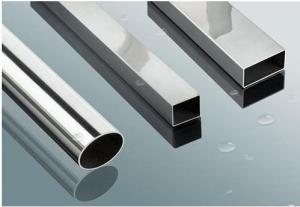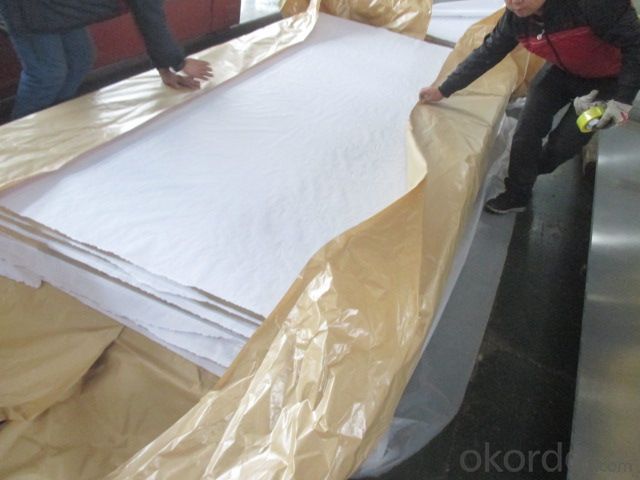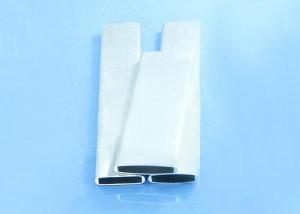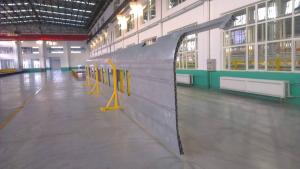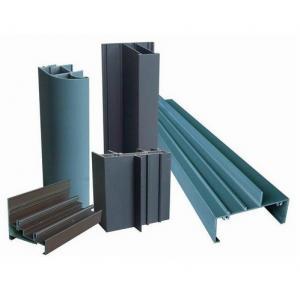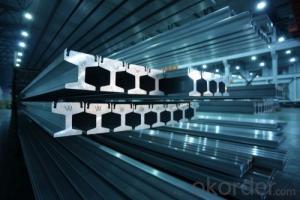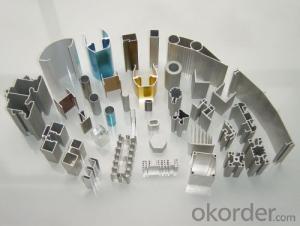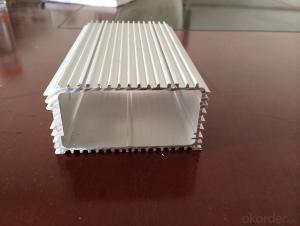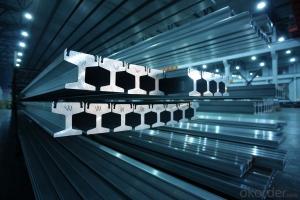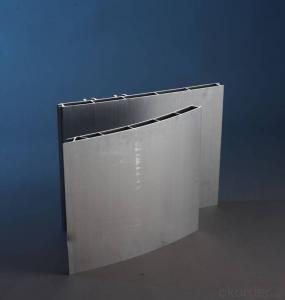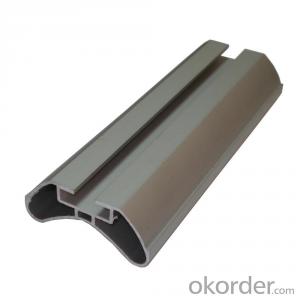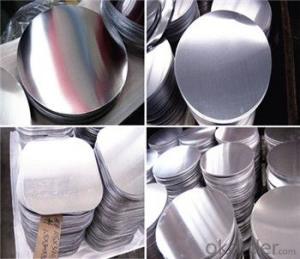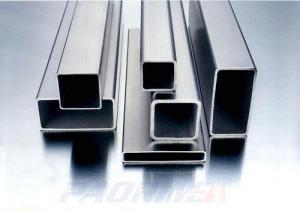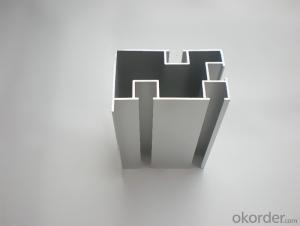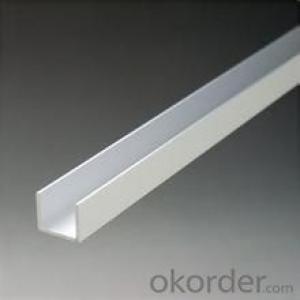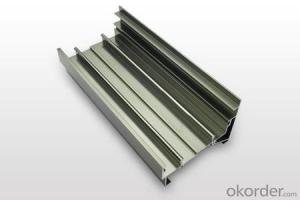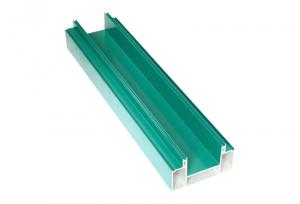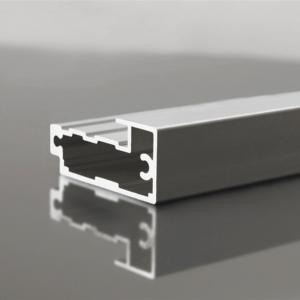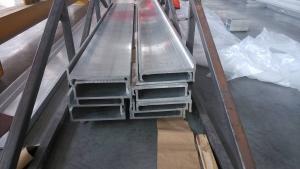T Slot Aluminum Extrusion Profiles - Aluminum Pipe, Sheet, and Plate
- Loading Port:
- Shanghai
- Payment Terms:
- TT or LC
- Min Order Qty:
- 6 m.t.
- Supply Capability:
- 5000 m.t./month
OKorder Service Pledge
OKorder Financial Service
You Might Also Like
1.Structure of Product Description
Cold rolled aluminum sheet and cold drawn aluminum plate are all widely used in the field of construction and other fields,etc.
n the field of construction field and decoration field, etc.
There are many different grades, such as: 1000 series, 2000 series, 3000 series, 5052,5754,5083,6061,6063,8011, etc.
The temper is include H14, H22, H24, H44,H112,H114,etc.
2. Main features of the product
a.Competitive price
b.Frist-Class Service.
c. Shortest service.
3. Image.
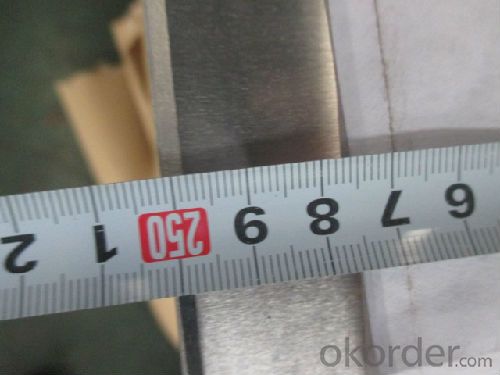
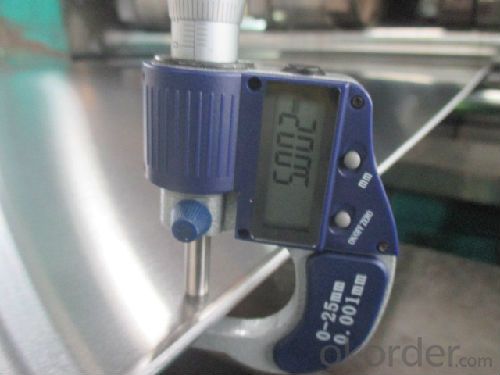
4. Product detailed sizes:
1000mm*2000mm, 1219mm*2438mm,1220mm*2440mm,500mm*3000mm, 1000*1000,2000*2000,etc.
5. FAQ:3000*3000,1500*1500mm,etc.
What is the quality standard?
---Usually our standard is GB3880-2006 or others.
What is the width range?
---It is from 1000mm to 2500mm, etc.
---Normally it is around 9000 tons totally.
Where is your client from?
---Normally it is from Japan, USA, vietnam, uae, usa,etc.
SINGAPORE, ETC.
What is your mainly products?
---Normally they are aluminum sheet, checkered sheet, mirror finish aluminium sheet, aluminum casting coil, etc.
- Q: Are aluminum profiles suitable for modular construction?
- Yes, aluminum profiles are highly suitable for modular construction. Aluminum is a lightweight yet strong material that offers numerous advantages for modular construction projects. Firstly, aluminum profiles have excellent structural integrity, making them suitable for supporting various loads in modular buildings. They can withstand heavy loads and provide stability, ensuring the integrity and safety of the entire structure. Secondly, aluminum profiles are corrosion-resistant, which is crucial for modular construction projects that may be exposed to different weather conditions. This resistance to corrosion enhances the durability and longevity of the modular constructions, reducing maintenance costs in the long run. Furthermore, aluminum is highly versatile and can be easily fabricated into different shapes and sizes, allowing for customized designs and adaptability in modular construction. This flexibility enables architects and engineers to create innovative and functional modular structures according to specific project requirements. In addition, aluminum profiles are lightweight compared to traditional building materials like steel, making them easier to transport and handle during the construction process. This lightness also contributes to reducing the overall weight of the modular constructions, which can be beneficial in terms of transportation costs and foundation requirements. Moreover, aluminum is a sustainable material as it is 100% recyclable, and its production process requires less energy compared to other materials. This makes it an environmentally friendly choice for modular construction projects, aligning with the growing demand for sustainable building practices. Overall, aluminum profiles offer a range of advantages that make them highly suitable for modular construction. Their strength, corrosion resistance, versatility, lightweight nature, and sustainability make them an ideal choice for creating durable, customizable, and efficient modular structures.
- Q: Explain how aluminum profiles contribute to the energy efficiency of a building.
- <p>Aluminum profiles significantly enhance the energy efficiency of a building through several mechanisms. They are lightweight yet strong, reducing the overall weight of the structure and the energy required for construction. Their excellent thermal conductivity allows for efficient heat transfer, which can be managed with proper insulation to reduce heat loss. Aluminum profiles also facilitate better window and door sealing, minimizing drafts and heat leakage. Additionally, their high reflectivity can help in reflecting solar heat, reducing the need for cooling. Lastly, aluminum profiles can be used in the construction of solar panels and other renewable energy systems, further contributing to a building's energy efficiency.</p>
- Q: How do aluminum profiles compare to plastic profiles?
- Various industries commonly use aluminum profiles and plastic profiles for different purposes. When comparing these two materials, there are several factors that need consideration. Strength and durability are important factors to consider. Generally, aluminum profiles are stronger and more durable than plastic profiles. Aluminum possesses high tensile strength, enabling it to withstand heavy loads and resist deformation. Conversely, plastic profiles are more prone to cracking or breaking under excessive stress. Another factor to consider is weight. Aluminum profiles are heavier compared to plastic profiles. This characteristic can be advantageous or disadvantageous depending on the specific application. The weight of aluminum can provide stability and strength, while the lightweight nature of plastic makes it easier to handle and install. Corrosion resistance is also a significant aspect to examine. Aluminum profiles exhibit excellent corrosion resistance properties, enabling them to endure exposure to various environmental conditions. This makes them suitable for outdoor applications. In contrast, plastic profiles are not as resistant to certain chemicals or UV radiation, which can cause degradation over time. Flexibility and design are important considerations as well. Plastic profiles offer greater design flexibility compared to aluminum profiles. Plastic can be molded easily into complex shapes and customized to meet specific requirements. Aluminum, although less flexible, can still be shaped or extruded into different profiles within certain limitations. Thermal and electrical conductivity should also be taken into account. Aluminum profiles have superior thermal conductivity, allowing them to dissipate heat more effectively. Consequently, they are often used in applications where heat dissipation is critical, such as electronics or heat sinks. Plastic profiles, on the other hand, have lower thermal conductivity and are less suitable for such applications. Cost is another factor to consider. Generally, plastic profiles are more cost-effective than aluminum profiles. The manufacturing process for plastic profiles is simpler and cheaper, resulting in lower production costs. Conversely, aluminum profiles require more advanced manufacturing techniques and additional finishing processes, making them relatively more expensive. In conclusion, the choice between aluminum and plastic profiles depends on the specific requirements of the application. Aluminum profiles offer superior strength, durability, and corrosion resistance, making them suitable for heavy-duty or outdoor applications. On the other hand, plastic profiles provide more design flexibility and cost-effectiveness, making them ideal for lightweight or customized applications.
- Q: Can aluminum profiles be used for industrial workbenches?
- Yes, aluminum profiles can be used for industrial workbenches. Aluminum is a lightweight and durable material that is commonly used in industrial applications. It offers excellent strength-to-weight ratio, corrosion resistance, and can be easily customized to suit specific needs. Additionally, aluminum profiles can be easily assembled and disassembled, allowing for flexibility and easy modifications to the workbench layout.
- Q: This question asks for an explanation of the various methods employed in the manufacturing of aluminum profiles.
- <p>Aluminum profiles are produced using several manufacturing processes, each suited to different applications and profile shapes. The primary methods include: Casting, where molten aluminum is poured into molds to form profiles; Extrusion, the most common process, where aluminum is pushed through a die to create long, continuous shapes; Rolling, used for creating flat or curved sheets and plates; Forging, which involves shaping aluminum by applying compressive forces; and Machining, where aluminum profiles are cut and shaped using tools. Each process has its advantages and is chosen based on the desired profile's complexity, strength, and cost-effectiveness.</p>
- Q: Can aluminum profiles be used for modular exhibition booths?
- Yes, aluminum profiles can be used for modular exhibition booths. Aluminum profiles are lightweight, durable, and easy to assemble, making them an ideal choice for creating modular exhibition booths. These profiles can be easily customized and reconfigured to meet specific booth design requirements. They offer a sleek and professional appearance and can be used to construct various elements of the booth, such as walls, frames, panels, and display shelves. Additionally, aluminum profiles can be easily transported and stored, making them a practical option for exhibition booths that need to be set up and dismantled multiple times.
- Q: Can aluminum profiles be used for skylights?
- Yes, aluminum profiles can be used for skylights. Aluminum is a popular material choice for skylight frames due to its durability, strength, and resistance to corrosion. It is lightweight yet sturdy, making it suitable for supporting the weight of skylight glass while ensuring long-lasting performance. Additionally, aluminum profiles can be easily customized and shaped to meet specific design requirements, allowing for various skylight styles and sizes. The use of aluminum profiles in skylights also provides excellent thermal insulation properties, contributing to energy efficiency by reducing heat transfer and preventing condensation. Overall, aluminum profiles are a reliable and practical option for constructing skylights.
- Q: Can aluminum profiles be used in agricultural machinery manufacturing?
- Yes, aluminum profiles can be used in agricultural machinery manufacturing. Aluminum is a lightweight and versatile material that offers various benefits for agricultural machinery. It is corrosion-resistant, which is essential for equipment exposed to harsh weather conditions and chemicals used in farming. Additionally, aluminum profiles provide excellent strength-to-weight ratio, allowing for the construction of sturdy and durable machinery without adding unnecessary weight. Aluminum's high thermal conductivity also enables efficient heat dissipation, preventing overheating of machinery components. Moreover, aluminum profiles can be easily formed, machined, and welded, providing flexibility in design and manufacturing processes. Overall, the use of aluminum profiles in agricultural machinery manufacturing can result in improved performance, fuel efficiency, and reduced maintenance costs.
- Q: I have a disinfection cabinet to cut off a piece of aluminum to install the control board, how to cut? What tool to cut?
- The use of wire saw can be sawed, if you cannot use a wire saw, it can only be used to drill holes along the need the position of the drill hole, finally use a tool to trim it to the edge.
- Q: This question asks about the various methods employed in the production of aluminum profiles, which are long, extruded shapes made from aluminum.
- <p>Aluminum profiles are manufactured using several processes, primarily extrusion, which involves forcing aluminum through a die to create specific shapes. Other processes include casting, where aluminum is poured into molds, and rolling, used to create flat sheets or plates. Machining processes like cutting, drilling, and milling are also used for further shaping and finishing. Additionally, aluminum profiles can be fabricated through bending, which shapes the material into curves or angles, and welding, which joins pieces together. Surface treatments like anodizing, painting, or powder coating are also applied to enhance appearance and durability.</p>
Send your message to us
T Slot Aluminum Extrusion Profiles - Aluminum Pipe, Sheet, and Plate
- Loading Port:
- Shanghai
- Payment Terms:
- TT or LC
- Min Order Qty:
- 6 m.t.
- Supply Capability:
- 5000 m.t./month
OKorder Service Pledge
OKorder Financial Service
Similar products
Hot products
Hot Searches
Related keywords
